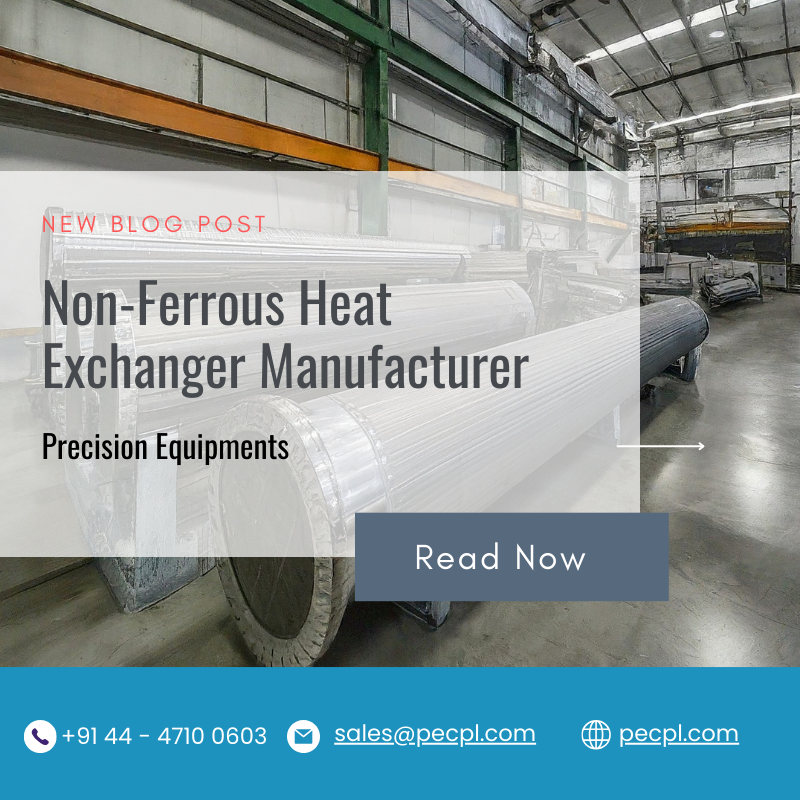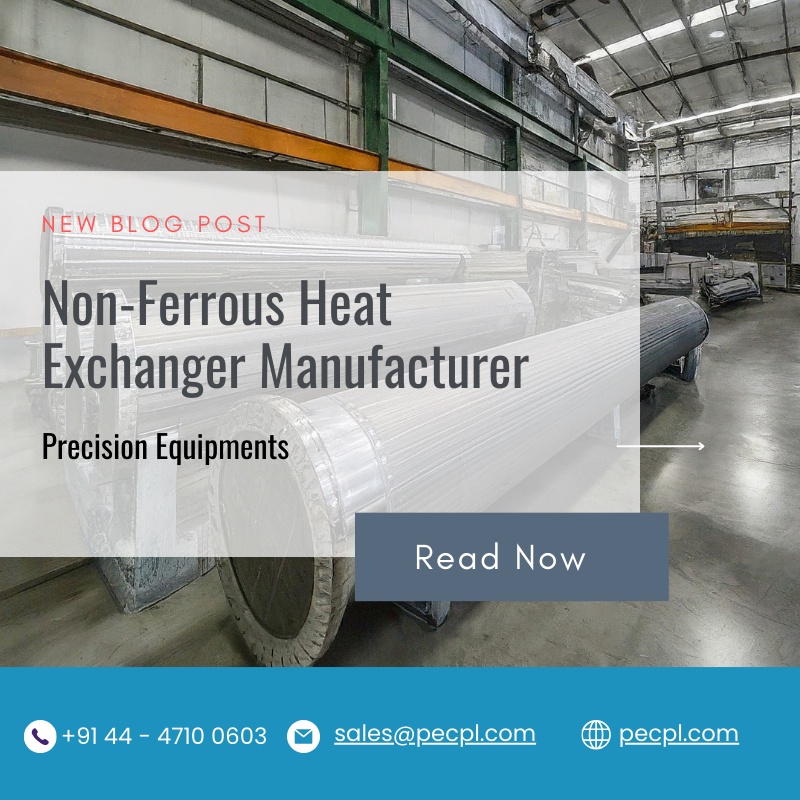
The workhorse of industrial process temperature control, heat exchangers play a vital role in countless applications. While ferrous materials like steel have traditionally dominated heat exchanger construction, non-ferrous options offer distinct advantages in specific scenarios. As a leading manufacturer of heat exchangers (including Shell and Tube designs) adhering to ASME, TEMA, IBR, HEI, and API standards, Precision Equipments Pvt. Ltd. (PECPL) explores the applications of non-ferrous heat exchangers across diverse industries.
Unveiling the Advantages of Non-Ferrous Materials
Non-ferrous metals, those devoid of significant iron content, bring a unique set of properties to the table for heat exchanger construction. Here's a closer look at some key benefits:
- Superior Corrosion Resistance: Non-ferrous metals like copper, aluminum, and certain alloys excel in resisting corrosion, particularly in environments with harsh chemicals or saltwater. This translates to extended equipment lifespan and reduced maintenance costs.
- High Thermal Conductivity: Efficient heat transfer is paramount for heat exchangers. Many non-ferrous materials possess excellent thermal conductivity, enabling faster heat exchange rates and improved process control.
- Lightweight Construction: Compared to ferrous counterparts, non-ferrous metals offer significant weight reduction. This proves advantageous in applications where weight is a critical factor, such as offshore platforms or mobile equipment.
- Non-Magnetic Properties: In applications sensitive to magnetic fields, non-ferrous materials become the clear choice. This eliminates potential interference with nearby instruments or processes.
Applications Driving Demand for Non-Ferrous Heat Exchangers
Across a wide range of industries, non-ferrous heat exchangers find their niche due to their specific properties. Here are some prominent examples:
- Chemical Processing: Highly corrosive chemicals present in the chemical processing industry pose a significant threat to traditional steel heat exchangers. Non-ferrous options like copper or cupro-nickel effectively combat corrosion, ensuring process integrity and safety.
- Power Generation: Condenser units in power plants often utilize non-ferrous materials like titanium for their exceptional resistance to saltwater corrosion in seawater cooling applications.
- Refrigeration & Air Conditioning: Copper reigns supreme in refrigeration and air conditioning systems due to its exceptional thermal conductivity, facilitating efficient heat transfer in condensers and evaporators.
- Marine Applications: The ever-present threat of saltwater corrosion necessitates non-ferrous solutions in marine environments. Shipboard applications, offshore platforms, and desalination plants all benefit from the corrosion resistance offered by non-ferrous heat exchangers.
- Food & Beverage Processing: Maintaining hygiene and cleanliness is paramount in the food and beverage industry. Non-ferrous materials like stainless steel offer superior resistance to corrosion and bacterial growth, ensuring product quality and safety.
- High-Pressure Applications: For high-pressure environments, non-ferrous options like nickel alloys or certain grades of copper can withstand extreme pressures while maintaining excellent heat transfer capabilities. PECPL, as a manufacturer with expertise in High-Pressure Heat Exchanger design and fabrication, can deliver solutions tailored to such demanding applications.
Selecting the Right Non-Ferrous Heat Exchanger
Choosing the optimal non-ferrous heat exchanger material requires careful consideration of various factors. Here are some key aspects to evaluate:
- Compatibility with Process Fluids: The material must be compatible with the fluids flowing through the heat exchanger to prevent corrosion or contamination.
- Temperature Requirements: The material's operating temperature range needs to encompass the process temperatures to ensure structural integrity and efficient heat transfer.
- Pressure Rating: The heat exchanger must be able to withstand the anticipated operating pressures.
- Cost Considerations: Non-ferrous materials often carry a higher initial cost compared to steel. However, their extended lifespan, lower maintenance requirements, and superior performance in specific applications can offset the initial investment.
Conclusion
Non-ferrous heat exchangers offer a compelling alternative in applications demanding superior corrosion resistance, lightweight construction, non-magnetic properties, or exceptional thermal conductivity. By understanding the unique advantages and limitations of non-ferrous materials, Non-Ferrous Heat Exchanger Manufacturers like Precision Equipments (PECPL) can guide you towards selecting the optimal heat exchanger solution for your specific process requirements. For any inquiries regarding non-ferrous heat exchanger design, fabrication, or project consultation, PECPL encourages you to reach out to their sales team via email at sales@pecpl.com or by phone at +91 44 - 4710 0603.


No comments yet